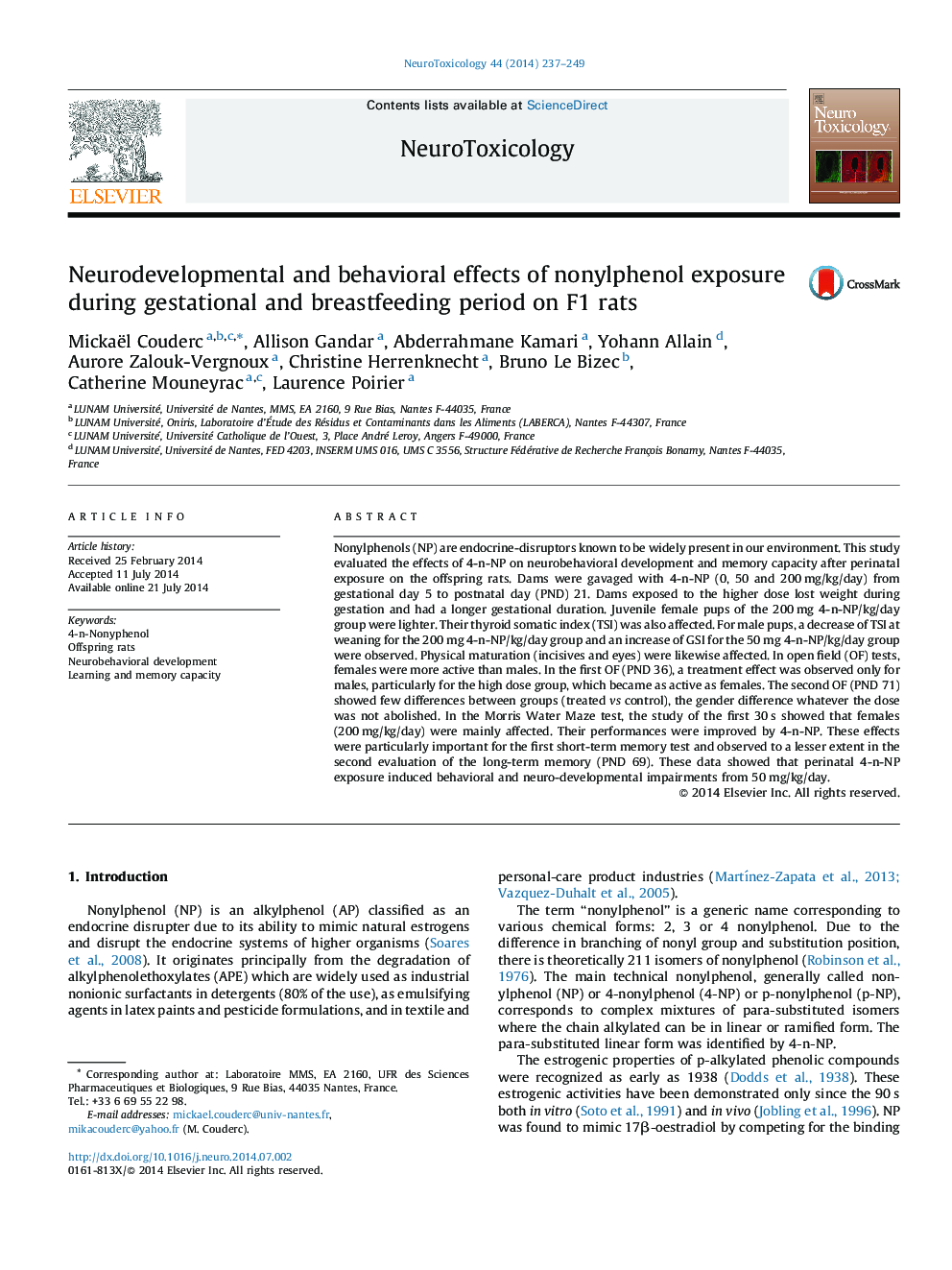| Article ID | Journal | Published Year | Pages | File Type |
|---|---|---|---|---|
| 2589678 | NeuroToxicology | 2014 | 13 Pages |
•Pre- and postnatal 4-n-NP exposure effects were evaluated on offspring rats.•4-n-NP induced a physical maturation earlier.•OF test showed an increased activity of exposed males.•MWM test revealed an improvement performances of exposed females.
Nonylphenols (NP) are endocrine-disruptors known to be widely present in our environment. This study evaluated the effects of 4-n-NP on neurobehavioral development and memory capacity after perinatal exposure on the offspring rats. Dams were gavaged with 4-n-NP (0, 50 and 200 mg/kg/day) from gestational day 5 to postnatal day (PND) 21. Dams exposed to the higher dose lost weight during gestation and had a longer gestational duration. Juvenile female pups of the 200 mg 4-n-NP/kg/day group were lighter. Their thyroid somatic index (TSI) was also affected. For male pups, a decrease of TSI at weaning for the 200 mg 4-n-NP/kg/day group and an increase of GSI for the 50 mg 4-n-NP/kg/day group were observed. Physical maturation (incisives and eyes) were likewise affected. In open field (OF) tests, females were more active than males. In the first OF (PND 36), a treatment effect was observed only for males, particularly for the high dose group, which became as active as females. The second OF (PND 71) showed few differences between groups (treated vs control), the gender difference whatever the dose was not abolished. In the Morris Water Maze test, the study of the first 30 s showed that females (200 mg/kg/day) were mainly affected. Their performances were improved by 4-n-NP. These effects were particularly important for the first short-term memory test and observed to a lesser extent in the second evaluation of the long-term memory (PND 69). These data showed that perinatal 4-n-NP exposure induced behavioral and neuro-developmental impairments from 50 mg/kg/day.
